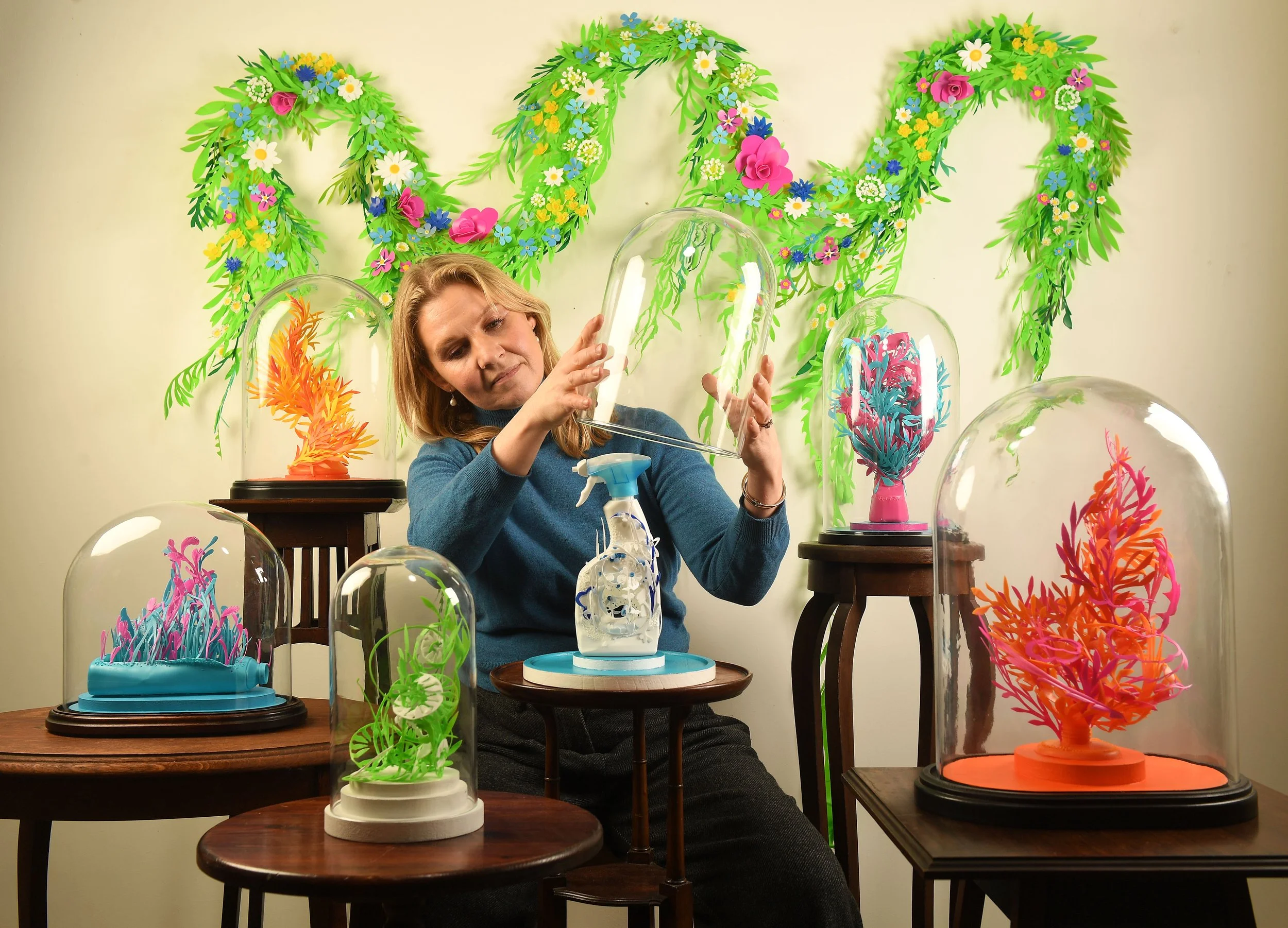Anya in her studio ahead of her Future Fossils exhibition at Pound Arts. Photo credit: Russell Sach.
Artist Statement
Anya Beaumont creates sculptural works from a range of materials, often waste plastic and discarded objects. She transforms these materials to explore complex ideas addressing environmental and political concerns as well as more personal stories, such as motherhood. Her work invites viewers in with its vivid colour and intricate form, then reveals deeper narratives around consumption, excess, and the value we place on materials.
Beaumont is particularly influenced by the applied arts, notably the baroque and rococo periods, where artisans reimagined the natural world in elaborate, decorative ways. She draws parallels between these historically excessive styles and today’s culture of overconsumption, using her own material language to question the sustainability of our desires and aesthetics.
Presentation plays a key role in her work. In series such as Future Fossils, the way objects are framed or staged becomes a part of the conversation—prompting viewers to consider what is preserved, celebrated, or discarded, and how context shifts meaning.
Her work has been commissioned for both public and private spaces, including Virgin Hotels in New York, Saga Cruises’ Ship ‘Spirit of Discovery’ and Corsham Town Council. She has exhibited extensively across the UK, and her work is held in Chippenham Museum’s collection of Modern and Contemporary art and numerous private collections internationally. Beaumont has received two Arts Council for England grants and has completed artist residencies at Middlesex University, Brent Council, and currently, at Pound Arts in Corsham. Beaumont has also had an extensive teaching career and currently teaches at Bristol School of Art.
She studied Fine Art (Sculpture) at Manchester School of Art and was awarded an MA with Distinction in Fine Art Theory and Practice from Middlesex University in 2004. Her work continues to explore the relationships between material, history, and meaning through a lens that is both critically engaged and visually dynamic.
